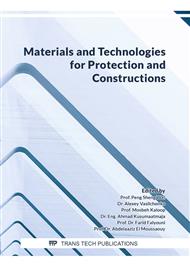p.3
p.12
p.19
p.26
p.33
p.41
p.49
p.55
Thin Wire Casting Using Twin Wheel Caster Equipped with Horizontal Wheels
Abstract:
solidification, process shortening and energy saving. A twin-wheel caster equipped with two additional horizontal wheels was proposed to cast thin aluminum alloy wire at higher speed. In the proposed twin-wheel caster, a groove was machined on the lower wheel. Two small horizontal wheels were positioned between the molten-metal-pouring launder and the upper wheel to assist the solidification of poured molten metal and to prevent burr formation. The alignment of the horizontal wheel sensitively affected the occurrence of wire defects. An Al-1.2%Fe wire with a cross section of 6.2 mm2 was cast at 15 m/min. Thinner wires without burring could be cast at a speed higher than that of the twin-wheel caster without the horizontal wheels. The surface condition of the as-cast wire cast by the twin-wheel caster equipped with horizontal wheels was worse than that of the casting using the twin-wheel caster without horizontal wheels.
Info:
Periodical:
Pages:
19-25
Citation:
Online since:
July 2022
Authors:
Keywords:
Price:
Сopyright:
© 2022 Trans Tech Publications Ltd. All Rights Reserved
Share:
Citation:



